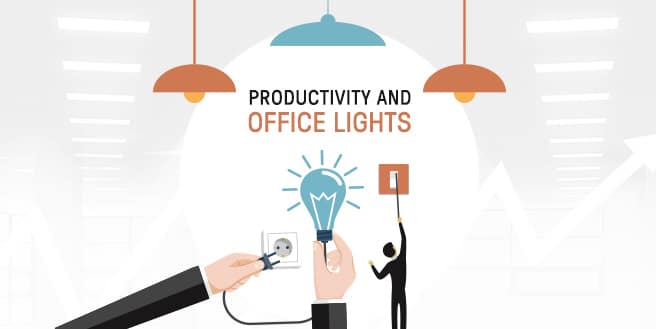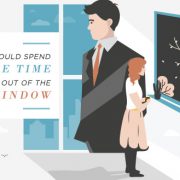Light It Up with Productivity and Office Lights
From the layout of your office down to the color of your walls, experts have recently uncovered the peculiar factors that affect the overall mood – and even productivity – of professionals.
The emergence of shared work areas such as coworking spaces showcased the impact of environmental physical design on an individual’s efficiency rate and focus. Several studies and surveys have highlighted the positive outcome of the movement to its members’ work life. Its open layout gave enough leeway to choose the setting that would work best with them.
In addition to this, trends such as comfort designs and dynamic offices attest to the growing demand of sustainable and efficient workplaces that help employees love their profession even more.
And though our ideologies of where to work are changing and constantly undergoing improvement, there’s one factor that is often treated with indifference by a number of designers and employers – lighting.
The Flick of a Switch
Hard to believe but its true – your mood, and even your overall well-being, can change with the flick of a switch. Aside from the common knowledge that reading in dark places can damage your eyes, poor lighting carry even more harm than we know. Well-lit environments can not only improve your employees’ productivity and vitality, it also helps enhance company image and aids you in recruiting new talents as well as retaining high-value workers.
In a recent study presented by Philips System, researchers saw a significant link between lights and circadian rhythms, or the ‘built-in-clocks’ of humans that determine their sleep cycle, stimulation, and relaxation. While another study have said that proper lighting can decrease depression and improve one’s mood and energy as well as their alertness and productivity.
The American Society of Interior Designs further strengthened the aforementioned claims by reporting a total number of 68 employees complaining about the systems of their respective office lights.
These issues serve as proof on the influence a simple light bulb can have to a person’s output. The amount of criticism businesses get with their systems can only mean that majority of them are making the same mistakes.
In order for a company to improve their workplaces and in return, get the most out of their team, it’s important that they understand what drives productivity and the factors that can affect it.
And one of the most notable factor that alter the way an individual works is the color temperature of the office lights they are exposed to on a regular basis.
Understanding Light
Those unfamiliar with lighting temperatures, colors and its variations may have a hard time figuring out which would be more appropriate for a work setting.
Measured in Kelvin (K), the temperature of light is a numerical representation of the color emitted by an object under a certain degree. As it increases, the colors will change and will emit light of that color.
Higher color temperatures that measure from 4,600K or more appear blue-white and are often called as daylight or cool colors. Mid-range temperatures within the average of 3,100K to 4,600K emit cool white and lower temperatures that are up to 3,000K materialize red to yellowish-white tone.
Knowing which office lights should be utilized in certain rooms can improve your overall workplace environment and can result to better performance from your team.
Finding the Perfect Office Lights
According to a study on the effects of high correlated color temperature office lighting on employee wellbeing and work performance, cooler light improves productivity. Using them on brainstorming rooms can help boost alertness and lowers melatonin which can help reduce feelings of fatigue.
Employees who have spent their whole day cooped up in the office can benefit from exposure to natural light. A study from Cornell University conducted among nurses who worked long shifts during nonstandard hours showed that respondents who had access to daylight communicated better with their colleagues and patients. In addition to this, significant improvement was seen in their health.
Stanley Felderman of design studio Felderman Keatinge & Associates suggest using extensive amount of glass to enable light to travel throughout the entire office space. Should daylight be inaccessible, they recommend using “blue-enriched” light bulbs.
Conference rooms can make use of mid-range color temperatures to create a welcoming aura while maintaining cool tones to promote alertness.
As our ideologies in work change, the more we see the power strategic lighting has.













Leave a Reply
Want to join the discussion?Feel free to contribute!